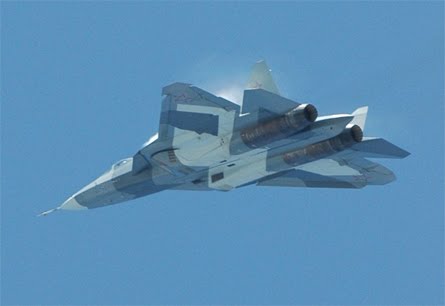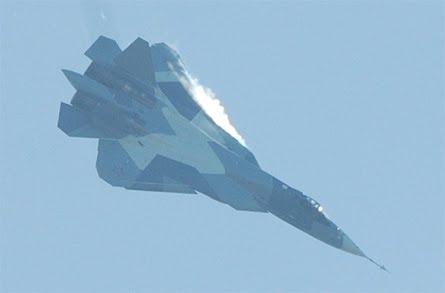http://www.dni.ru/economy/2010/9/8/198600.html
The volume of export deliveries of Russian fifth generation fighter Sukhoi could exceed 600 units. However, depending on the development of international situation and the emergence of new hotbeds of tension in various regions of the world supply volumes of T-50 can be adjusted. Such predictions are given analysis center of the world arms trade.
"According to the forecast of experts of our Center, as part of the production program promising aviation complex tactical aviation in Russia will be built at least thousands of these fighters, with the expected order of Russian Air Force during the years 2020-2040 with a favorable economic scenario of the country will make at least 400-450 machines ", - said director of Center for Analysis of the global arms trade Igor Korotchenko.
According to him, a real competitor to the T-50 in the foreseeable future there will be only the F-35 Lightning II, as heavy version of the U.S. fifth generation fighter F-22 because its too costly - about $ 250 million per aircraft in the export performance - barely I find the demand on the world arms market.
It clarifies the RIA Novosti, only India is planning to have a battle of its air force is not less than 250 fifth-generation fighter.
Experts identify more than a dozen countries that are potential and the most likely buyers of Russian T-50. Among them were: Algeria with the alleged purchase of 24-36 fifth-generation fighter in the period of 2025-2030 years, Argentina - 12-24 units in the years 2035-2040, Brazil - 24-36 units in the years 2030-2035, Venezuela - 24 - 36 units in the years 2027-2032, Vietnam - 12-24 units in the years 2030-2035, Egypt - 12-24 units in the years 2040-2045. Also on the list referred to Indonesia (6-12 units in the years 2028-2032), Iran (36-48 units in the years 2035-2040), Kazakhstan (12-24 units in the years 2025-2035), China (up 100 units in 2025 -2035 years), Libya (12-24 units in the years 2025-2030), Malaysia (12-24 units in the years 2035-2040) and Syria (12-24 units in the years 2025-2030).
Google Translate


















